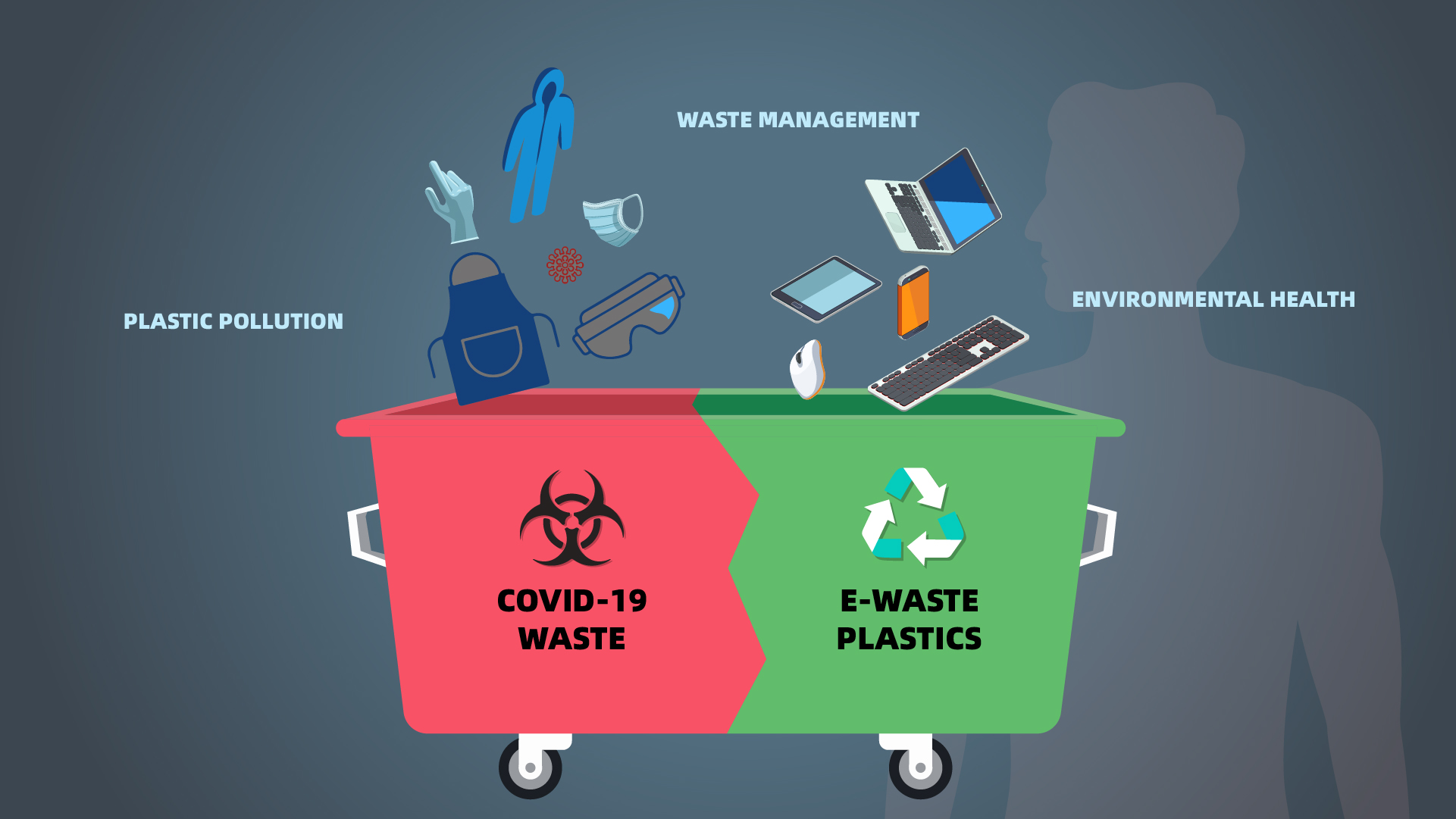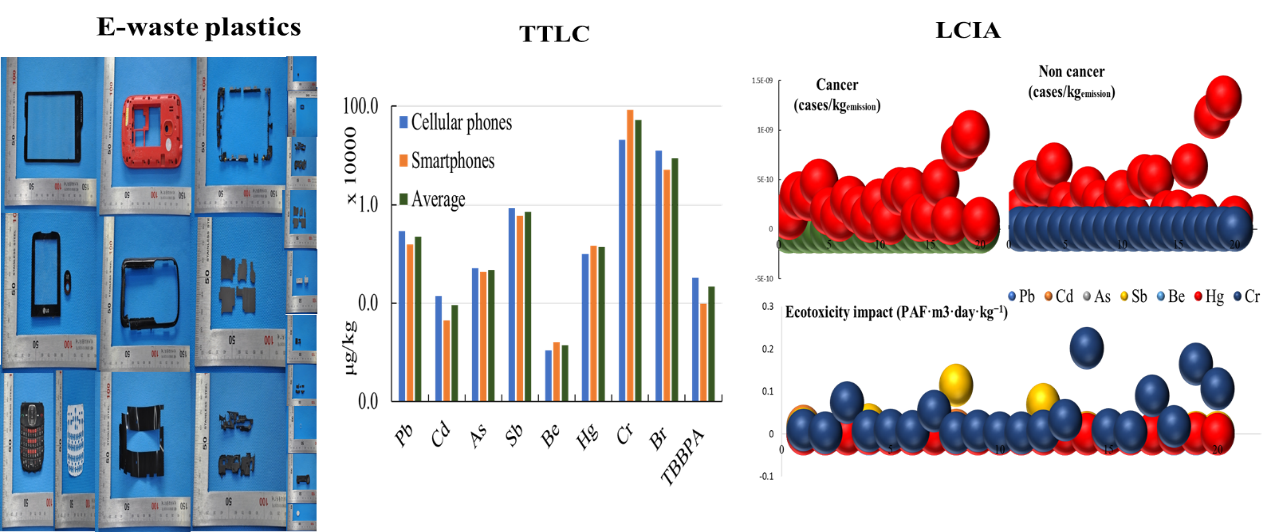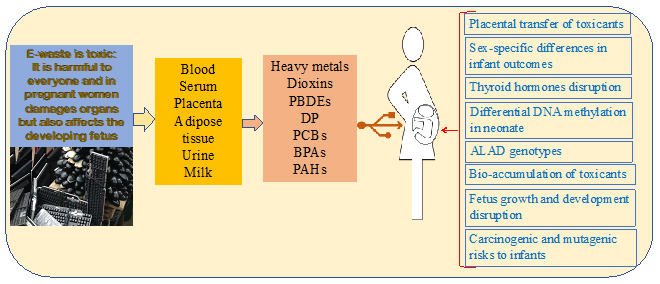Recently, Professor Yuanyuan Tang’s research group of the Southern University of Science and Technology (SUSTech) has been working on topics of environmental pollution of plastics and has delivered a series of publications in this area, including the health impact of e-waste plastics and the medical waste problems, especially during the COVID-19 pandemic. The research outcomes have been published in leading scientific journals in the environmental field such as Environmental Science & Technology, Critical Reviews in Environmental Science and Technology, Resources, Conservation & Recycling, etc.

With increasing medical waste generated by the COVID-19 pandemic, the first publication demonstrated available knowledge and current practices in medical and healthcare waste management worldwide. This study conducted a meta-analysis of medical and healthcare waste management practices in 78 countries and identified impediments and challenges facing the integration of medical waste management into a prospective circular economy.
According to statistical correlations with human development index (HDI), life expectancy (LE), healthcare expenditure (HE) per capita of gross domestic product (GDP), and environmental performance index (EPI), the obtained results highlight the importance of knowledge and awareness of best practices on infection and injury prevention for waste management among workers. Plastic materials constituted about 35% of medical waste, presenting an opportunity for sustainable resource recovery and recycling. Their research suggests that all countries should adopt environmentally sustainable management of medical waste to prevent catastrophic stockpiling of infectious waste during and after pandemics. Additionally, this work also presented an outline for future studies on medical waste generation rate and various socio-economic and environmental parameters that should be investigated in future work to promulgate an inventory of the database for sustainable management of medical and healthcare waste.

Figure 1. The management status and practices of medical waste in different countries. This includes the data on the risk of injury, medical waste management knowledge and awareness among the workers, training programs of workers in-service for the medical waste management, and the quantity of medical waste generation and segregation at the source.
The second and third publications focused on environmentally sound management of personal protective equipment (PPE) such as face masks, gloves, goggles, gowns, and aprons. Early in the pandemic, challenges in international supply chains and stay-at-home orders affected both the availability of PPE and procedures for waste collection and management. Countries worldwide were struggling with the strategies and infrastructure for proper disposal of medical waste including the PPE due to the rapid increase in generation caused by the COVID-19 pandemic.
Furthermore, the study also published the key takeaway from the experience of medical waste management during the COVID-19 outbreak in Wuhan. Generally, the COVID-19 pandemic has strained solid waste management globally, while also highlighting the bottleneck supply chain challenges regarding PPE manufacture, demand-supply use, and disposal. PPEs will continue to be in high demand, and this is the time to invest in research and development for new PPE materials that reduce waste generation, and for improved strategies for safe and sustainable management of used PPE with policy guidance at a global level.

Figure 2. Medical waste generation and compositions in China
The fourth and fifth publications focused on discarded plastics and consumer electronics which have led to increased concerns about the potential impact on human health. By delivering a systematic review, the fourth publication assesses the effects of e-waste exposures on pregnancy outcomes and neonate’s health. Outcomes from the study showed a possible association between exposure to e-waste and pregnancy and adverse neonatal health outcomes including sex-specific differences in infants’ growth, placental transfer of toxicants, thyroid hormones disruption, DNA methylation and oxidative damage, ALAD genotypes, carcinogenic risks, and sex hormones disruption in pregnant women and developing fetus. The results support evidence that e-waste exposure is associated with negative effects on pregnancy and neonatal health outcomes.
The research outcomes of the fifth publication evaluated the toxicity of e-waste plastics, showing that the levels of Pb, Cd, Be, Sb, As, Hg, and BFRs in the plastics of discarded mobile phones do not pose a major danger if they were collected and recycled properly. However, a higher concentration of total Br could pose a potential danger to the environment and human health if the plastics end up in open burning. Hg and Pb contributed to the major risk for carcinogens and non-cancer disease in the plastic of mobile phones.

Figure 3. Potential consequences for human health from toxic substances contained in e-waste plastics

Figure 4. Adverse effects of e-waste exposures on pregnancy outcomes and neonate’s health
Narendra Singh, Research Assistant Professor at SUSTech, is the first author of the above papers. Associate Professor Yuanyuan Tang’s research team at SUSTech is the corresponding author, with SUSTech as the first affiliation. The co-authors of the paper include Professor Chunmiao Zheng and Professor Zuotai Zhang of SUSTech, and Professor Oladele A Ogunseitan from the University of California, Irvine (UCI).
The above research was funded by the National Natural Science Foundation of China (NSFC), the Post-Doctoral Program in Shenzhen, the State Environmental Protection Key Laboratory of Integrated Surface Water-Groundwater Pollution Control, and the Guangdong Provincial Key Laboratory of Soil and Groundwater Pollution Control.
Paper links:
First publication: http://dx.doi.org/10.1080/10643389.2021.1885325
Second publication: https://doi.org/10.1016/j.resconrec.2020.105071
Third publication: https://dx.doi.org/10.1021/acs.est.0c03022
Fourth publication: http://dx.doi.org/10.1080/10643389.2020.1788913
Fifth publication: https://doi.org/10.1016/j.envint.2020.105559
Proofread ByAdrian Cremin, Yingying XIA
Photo By